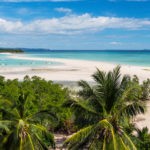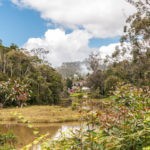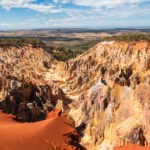Once you have made a trip to another tropical country, you will already be aware that the weather can be a bit more extreme than in this country. However, there are places where you might not expect the strong influence of the tropical climate. A good example of this is the island nation of Madagascar, a popular tropical destination located in the Indian Ocean. Because the ocean currents also affect the weather, it quickly becomes clear why the island is also one of the tropics.
Although the weather is not as constant because of the greater distance to the equator as in countries near the equator, the average annual temperature of 20 to 25 ° C is basically ideal for a relaxing holiday with warm weather.
However, when traveling to Madagascar, it is important to be aware of the seasonal weather conditions in each region before traveling, as there are many differences and peculiarities between the coastal, inland and upland regions.
The backcountry and coasts of Madagascar
The coastal regions as well as the country side of Madagascar are generally characterized by very mild temperatures, which can also increase quite strongly. With an air humidity of between 65 and 80%, it is clear that there is a typical tropical climate all the years. Especially on the coast you have to expect in a few months stronger winds, often in conjunction with heavy rainfall or heat storms. Depending on the region, the rainy season lasts approximately from December to March – statistically the highest rainfall occurs. Between April and November, summer temperatures and a dry climate prevails in most parts of Madagascar.
Madagascar – the climate in the highlands
The highlands of Madagascar start at about 1,400 meters above sea level and reach far into the interior of the island. The temperatures are rarely higher than at 25 ° C, also the weather in the highlands is unpredictable. However, when it is dry in the highlands, the temperatures are very mild and the humidity is much more moderate than on the coast.
The best travel time for Madagascar – important information on the topic
Those who have chosen the dream destination Madagascar as a destination wish of course as much as possible a blue sky, lots of sun and pleasant temperatures for sunbathing, swimming and for various leisure activities. So that you can truly enjoy the holiday in Madagascar, it is therefore very important to know the right travel time for the each region. Not only the climate and the weather, but also the own demands and plans for the journey play an important role.
Cyclones occur, for example, on the island, especially between January and March – however this is exactly the season on the other hand which offers particularly mild temperatures in the east and highlands. Since there is a high summer on the island during this time, temperatures in the north and south of Madagascar are expected to be above 28 ° C. Another advantage is that the dometic flights are usually very cheap between January and March. From January to February, however, parts of the south of the island are flooded due to heavy rainfall. The south can then be easily traveled from March again.
From March, Madagascar must expect that heavy rainfall can occur again and again – but this is not always the case. Some streets may even be flooded. Between April and June, tourism in Madagascar is increasing significantly. Sights and the capital are much better visited than in the other months.
Rain occurs only from the summer months in the green east of the island, in addition, the temperatures drop significantly. The winter season in Madagascar begins around June. The maximum daily temperature around Antananarivo is only 20 ° C – at night it can go down to 10 ° C cold. The high season on Madagascar is the months of July and August – air travel is usually the most expensive during this time, but the climate is very pleasant and temperate, and the humidity is lower.
If you want to spend a relaxing beach holiday in Madagascar, you can of course swim on many beaches. If you want to explore the lush nature of Madagascar, then this season is also recommended. On the coasts it is now worth taking time for Whales observation. On land, most reptiles and mammals, are however on wintersleep and can be seen therefore only with luck on a hike.
For stable, pleasantly mild temperatures, where reliable animal observations are possible and it does not rain too much, the travel months from September to November are ideal. During this time the weather is less extreme. The Malagasy summer months set in slowly, the wildlife awakens and the flora and fauna is at its best. It is raining slowly , but you don’t have to worry about it. It is extremely rare anyway that long-lasting downpours occur in the tropics. The classic rainy season is usually a season in which short but very intense downpours can occur several times a day. Those who are not bothered by it or the higher humidity, can be happy about a holiday in Madagascar.





